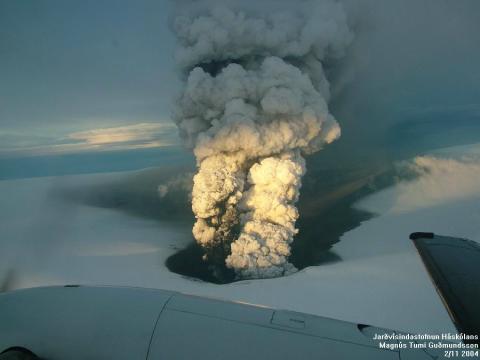
Welcome to version 2.0 of Eruptions, the blog on volcanic eruptions and volcano research in general. I've been writing this blog (starting over on Wordpress) over the last year or so, but now it has found a new home here at ScienceBlogs. If you're wondering what to expect if you're new to Eruptions, I'll be bringing news of volcanoes that are erupting worldwide, distilling the scientific jargon, dispelling the misinformation and commenting on what the effects of the eruption(s) might be. I'll also try to bring in any volcanoes in the popular media that gets my attention (alas, it has been almost 15 years since Hollywood's brief fixation with volcanoes that brought us Dante's Peak and Volcano), along with current research on the phenomenon of volcanic eruptions and magmas within the Earth. When things get quiet - volcanically speaking - I'll continue rolling out volcano profiles as well.
Who am I to bring you this? Well, a geologist, for one. A geologist who happens to study volcanoes. I'm not a physical volcanologist - one who studies the physical processes that go on during an eruption, such as ash fall, pyroclastic flows or lahars - but rather I study the magmas that drive volcanism. Specifically (for those of you who enjoy the gory details), I study the crystals in magma. Pick up almost any volcanic rock and if you look at it close enough, you'll see crystals in it (except obsidian ... it is volcanic, but usually is entirely glass). These crystals contain a treasure-trove of age, compositional and thermal information about the magma in which the crystals found themselves. I try to extract that information through microanalysis - examining the crystals on the micron, or .0001 cm, scale - and dating using radioactive elements such as uranium, thorium and radium. If you're really curious about what I do, check out my research.
So, sit back and enjoy the volcanic action.